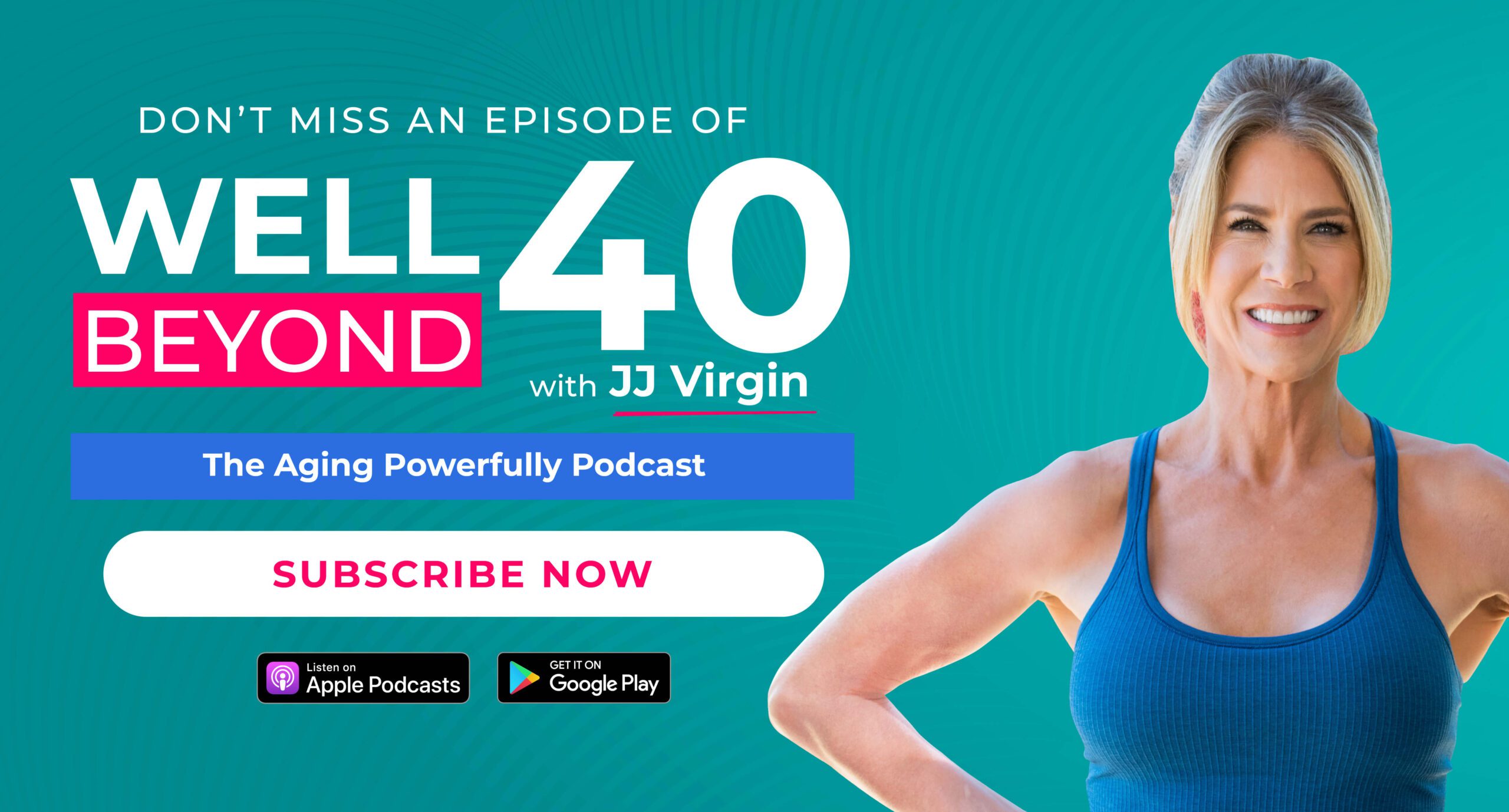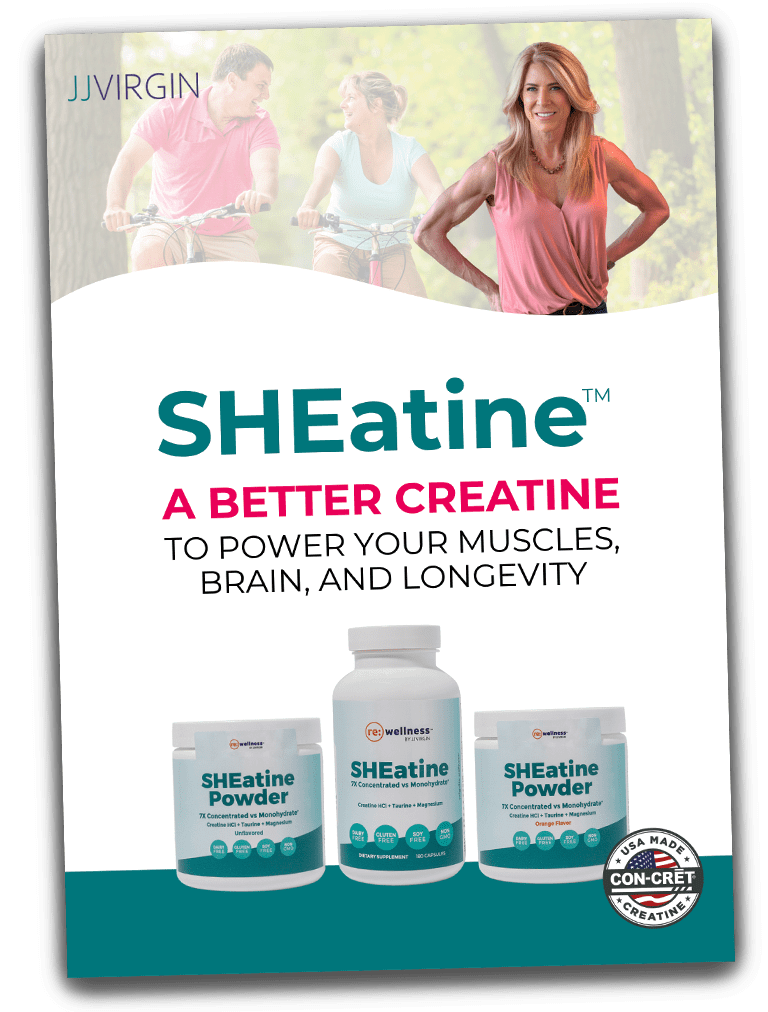Studies show that lack of time is a major reason people blow off workouts.1 High-intensity interval training (HIIT) is an excellent solution; this intense workout fits seamlessly into even the busiest schedules in 20-30 minutes.
The benefits are vast. A HIIT workout can significantly boost your metabolism, ensuring you continue to burn calories after your session. HIIT targets and reduces visceral fat, a dangerous type of fat nestled around vital organs and linked to severe health issues like heart disease and diabetes. HIIT can also reduce stress, boost your mood, support better sleep, and more.
Why You Should Try HIIT
HIIT’s appeal lies in its adaptability and the high intensity it requires, which drives constant progress and ensures your workouts keep pace with your improving fitness levels. By challenging your heart rate and stamina, HIIT maximizes health benefits in less time than traditional steady cardio. Here’s why HIIT workouts deliver exceptional value.
- Time efficiency: Fitting in exercise can feel daunting when you have a thousand other things on your to-do list. HIIT is quick—you can get an effective workout in 30 minutes or less. This efficiency makes it an ideal choice for those with busy schedules, proving that lack of time doesn’t need to be a barrier to achieving your fitness goals.
- Versatility: HIIT can be adapted to your preferences and fitness level. Whether you prefer sprinting, jumping rope, bodyweight exercises, or a combination, the flexibility ensures that workouts are effective and enjoyable.
- Convenience: You don’t need a gym membership or specialized equipment to get started. You can do HIIT in your living room, backyard, hotel room, or nearby park. Equipment isn’t always necessary, so it’s an accessible option for travelers or those with limited access to gym facilities.
- Enjoyability: Let’s face it: Not everyone enjoys the monotony of some cardio (like jogging). HIIT can be much more exhilarating. The high-intensity nature of these workouts provides a dynamic, engaging experience that many people find more enjoyable than traditional cardio methods. You’re more likely to consistently follow exercise routines that challenge you and keep you engaged.
5 Benefits of HIIT
1. Weight Loss
When it comes to exercise for fat loss, HIIT leads the way. A review of 39 studies concluded that HIIT is a good way to lose fat quickly, including harmful visceral fat stored deep in the abdomen that can lead to heart disease and type 2 diabetes.2, 3
One study compared HIIT with moderate-intensity exercise for losing fat among postmenopausal women with type 2 diabetes. While both groups lost some body fat, the HIIT group saw a much bigger reduction in visceral fat.4
The efficacy of HIIT in weight loss partly stems from the afterburn effect, where your body’s oxygen consumption remains elevated post-exercise to facilitate recovery. Essentially, after an intense workout, your body operates at an increased metabolic rate to return to normal. This process helps burn more calories during the exercise and after your workout.5 HIIT also helps preserve lean muscle mass to keep your metabolism working well.6
2. Blood-Sugar Balance
HIIT can improve your body’s ability to use insulin properly and better control blood-sugar levels. The intense exercise in HIIT stimulates your muscles to use glucose for energy at a higher rate, both during and after exercise. Increased glucose uptake by muscles helps lower your blood-sugar levels.
When your body becomes more sensitive to insulin, it can manage blood sugar more efficiently.7 This reduces the likelihood of experiencing sudden high or low blood sugar, which can cause energy dips and intense cravings.
One review of 50 studies looked at how exercise impacted blood sugar. Researchers compared people who did HIIT with those who did steady, ongoing training or no training. They found that HIIT improved metabolic health and lowered the risk of insulin resistance. Researchers didn’t see these same benefits in the steady-training and no-training groups. In this condition, your body’s cells don’t respond well to insulin, which increases your risk of type 2 diabetes and other health issues.8
3. Hormone Balance
Beyond its impact on insulin, HIIT positively affects other hormones crucial for muscle growth, fat metabolism, recovery, and a healthy mood. Among them include:
- Stress hormones: HIIT can help manage levels of the stress hormone, cortisol. Research shows that while HIIT raises cortisol levels immediately after a workout, your body adapts and brings hormone levels back to normal. This makes HIIT a great way to manage stress, improve resilience, and balance cortisol.9 However, keep in mind that overdoing HIIT can chronically increase cortisol levels, potentially countering the benefits of exercise by contributing to unwanted weight gain, particularly in abdominal fat, and impairing overall health. Pay attention to your body’s signals and rest when you need to.
- Growth hormone: HIIT boosts the production of growth hormone (GH), aiding muscle growth and repair and enhancing fat metabolism. GH also plays a role in stimulating the release of your feel-good endorphins. A rise in growth hormone from HIIT supports lean muscle mass, facilitates fat loss, and enhances mood and overall happiness.10
- Hunger hormones: HIIT also manages your hunger-regulating hormones, including leptin and ghrelin.11 Leptin signals to the brain that you have enough energy stored in fat cells, which helps to regulate appetite and energy balance. By influencing leptin levels, HIIT can help maintain a healthy appetite and prevent overeating. Your hunger hormone ghrelin, on the other hand, stimulates appetite. HIIT can help regulate ghrelin levels, reduce unnecessary hunger signals, and help you avoid excessive calorie intake.
4. Menopause Management
One review found that HIIT can be a good option for women around menopause. Researchers found that HIIT could help reduce weight, total fat mass, and abdominal fat in both normal-weight and overweight women, focusing on differences before and after menopause. They found that HIIT significantly decreases body weight, total body fat, and abdominal fat in women. Consistency was important: programs lasting longer than eight weeks, with sessions three times a week, were most effective.12
However, HIIT can also help with other obstacles women face around menopause. Among them, HIIT:
- Combats muscle loss: Menopause can decrease muscle mass, partly due to hormonal changes. Maintaining muscle mass helps regulate metabolism, supports skeletal health, and maintains strength. HIIT supports muscle by stimulating muscle preservation and growth, counteracting the natural decline during menopause.13
- Alleviates menopausal symptoms: HIIT can help reduce some common symptoms of menopause, such as hot flashes and mood swings, by helping you manage the stress levels that can contribute to these issues.14 It can also help balance hormones and enhance your mood by releasing endorphins, the body’s natural mood elevators.15
- Improves quality of life: By addressing both the physical and emotional challenges of menopause, HIIT can significantly improve your overall quality of life. It promotes better sleep, reduces stress, and increases energy levels, making menopause smoother and more manageable.16
5. Heart Health
Heart disease is the leading cause of death among women. Studies show that over 60 million women (44%) in the US are living with some form of heart disease.17
A crucial measure of heart health and cardiovascular fitness is how your heart rate returns to normal after vigorous activity. HIIT effectively speeds up this recovery, supporting a healthier heart and reducing the likelihood of heart problems.18
Additionally, HIIT enhances how your blood vessels work, supporting healthy blood-pressure levels. It boosts your heart’s efficiency in pumping blood, optimizes oxygen use during physical activity, and improves your arteries’ flexibility and health. The result is a stronger heart, better equipped to manage daily stress, and a lower risk of cardiovascular diseases.19
Getting Started With HIIT
The beauty of HIIT lies in its versatility. Whether it’s sprinting, jumping rope, dancing, or any other high-energy activity, the key is to select something that elevates your heart rate and gets you moving.
Some of my favorite HIIT exercises include:
- Sprinting: Short, intense bursts of running at total effort followed by a slow jog or walk as recovery.
- Jump rope: Rapid jumping for a set interval, alternating with rest periods or slower-paced jumping.
- Burpees: A full-body exercise combining a squat, push-up, and jump, performed quickly.
- High knees: Running in place while lifting your knees as high as possible, aiming for speed and height.
- Mountain climbers: A cardio move that simulates running while in a plank position. You rapidly alternate driving your knees towards your chest.
- Cycling sprints: Intervals of all-out pedaling on a stationary bike, alternating with periods of slow pedaling for recovery.
- Tabata squats: Perform squats at high intensity for 20 seconds, followed by 10 seconds of rest, and repeat for 4 minutes. By high intensity, I mean performing squats at your maximum effort or as hard as you can while maintaining proper form within those 20 seconds. It’s about pushing your limits to elevate your heart rate and exerting yourself close to your maximum capacity rather than simply doing squats quickly. This intensity level is crucial for maximizing the effectiveness of the Tabata protocol.
- Kettlebell swings: Swinging a kettlebell with high intensity through the legs to shoulder height, followed by brief rest periods.
- Box jumps: Explosive jumps onto and off a sturdy box or platform, with rest between sets.
- Tuck jumps: Jumping from a standing position, bringing your knees to your chest at the peak of the jump, with brief pauses in between for recovery.
- Jump lunges: Start in a lunge with knees bent at 90 degrees, one leg forward. Explosively jump, switching legs mid-air, and land in a lunge with the opposite leg forward. Keep the pace quick but maintain form to avoid injury and ensure effectiveness.
Whatever you choose, you’ll want to adjust the intensity to match your fitness level. Remember, the cornerstone of HIIT is pushing yourself to your limits during intense bursts. Don’t be afraid to challenge yourself; also, be mindful of your body’s signals to prevent overexertion.
Signals to pay attention to include:
- Breathlessness: Feeling breathless during intense bursts is normal, indicating you’re working hard. However, if you cannot catch your breath during the rest periods, consider dialing back the intensity.
- Fatigue: While muscular fatigue is normal with HIIT, if you feel so exhausted that your form begins to suffer significantly, it’s a sign to either take a longer rest or reduce the intensity.
- Pain: While muscle soreness can be a regular part of exercise, sharp or persistent pain is not. Feeling pain, particularly joint or sharp muscle pain, is a clear signal to stop and rest.
- Dizziness or nausea: These can be signs of pushing too hard or not being properly hydrated or fueled. If you feel dizzy or nauseous, take a break and ensure you are well-hydrated and have eaten appropriately.
- Rapid heart rate: An elevated heart rate is expected during HIIT, but if your heart rate doesn’t start to come down during your rest periods or if you experience palpitations, take it as a sign to slow down.
HIIT offers several variations to add variety and challenge to your workouts. Your options include:
- Traditional HIIT: Involves short bursts of intense activity followed by a brief rest or low-intensity exercise. Typically, the work periods last from 15 seconds to several minutes, with rest intervals of equal or longer duration. You can adapt traditional HIIT to cardio activities like running, biking, or rowing. Its versatility lies in its wide range of fitness levels, which you can modify based on your capabilities and goals.
- Tabata: A form of HIIT that includes eight rounds of ultra-high-intensity exercises in a specific 20-second-on, 10-second-off pattern. Although initially designed for Olympic speed skaters, you can apply Tabata training to various exercises, including bodyweight movements and weightlifting. Because it’s incredibly time-efficient, Tabata training is ideal for those with limited time who want to maximize calorie burn and cardiovascular benefits.
- Circuit training: Combines strength training and high-intensity cardio by cycling through a series of exercises with minimal rest in between. Each “circuit” targets different muscle groups. You can include bodyweight exercises, weights, or plyometrics. You can also customize the sequence to focus on specific fitness goals. Circuit training enhances muscular endurance and strength while providing cardiovascular benefits, making it comprehensive and customizable.
- AMRAP (as many rounds/reps as possible): Completing as many rounds of a given set of exercises in a fixed amount of time. The intensity comes from the pace and minimal rest. You can vary the exercises and duration, allowing endless customization based on goals and preferences. This allows for personal benchmarks and progress tracking, suitable for all levels as you set their own pace.
- EMOM (every minute on the minute): You start a new set of exercises at the beginning of each minute, resting until the next minute begins after they finish the set. You can adapt EMOM to any mix of exercises, with the difficulty and rest periods adjusted to fitness levels. Because it balances work and rest precisely, EMOM enhances endurance and strength while managing fatigue.
Here’s What an Example HIIT Workout Looks Like
Warm Up
Begin with a light warm-up to gradually increase your heart rate and prepare your muscles for the workout. Simple activities like jogging in place, doing arm circles, or light dynamic stretching work well.
Do This HIIT Sequence
A staircase is a great place to do HIIT. You can do this routine at a hotel, the airport, or any public building where you can take the stairs.
- Sprint for 30 seconds: Go all out, pushing your speed to the maximum.
- Walk for 1 minute: This is your active recovery period. Keep moving, but allow your heart rate to come down.
- Run stairs for 1 minute: Find a set of stairs and run up them at a challenging but sustainable pace.
- Walk downstairs for 2 minutes: Use the descent as your recovery, walking down at a comfortable pace.
- Two-step stairclimbs for 1 minute: For this burst, skip a step with each stride to increase the intensity.
- Waldownstairsrs for 2 minutes: Use this time to recover, preparing for the next burst.
- Repeat the stair running and walking sequence.
Cool Down
Finish your session with a gentle cool-down. This could include slow walking, gentle stretching, or low-intensity activity that helps your body transition back to its resting state.
Get in the Zone
I like to finish a HIIT session with Zone 2 training. This type of training involves steady, moderate-intensity cardiovascular exercise that keeps your heart rate within a specific range (typically 60-70% of your maximum heart rate). This intensity level encourages fat burning and improves aerobic fitness without significantly stressing your body.20
Integrating Zone 2 training after a HIIT session can complement and enhance the benefits, including fat burning, recovery, and a healthier heart.
The Synergistic Benefits of HIIT and Resistance Training
Resistance training is the perfect complement to your HIIT efforts. Lifting heavy things supports strong bones and muscles, boosts metabolism, reduces the risk of chronic diseases, and helps you age powerfully. Plus, more variety keeps workouts fresh and engaging, helping to avoid plateaus and maintain consistent progress.
My Resistance Training Cheat Sheet provides everything you need for your fitness journey, including home gym essentials, an 8-week workout plan, and a progress tracker to track your sets, reps, and weights with each workout.
Get your Resistance Training Cheat Sheet here.
References:
- Gillen JB, Gibala MJ. Is high-intensity interval training a time-efficient exercise strategy to improve health and fitness? Appl Physiol Nutr Metab. 2014 Mar;39(3):409-12. doi: 10.1139/apnm-2013-0187. Epub 2013 Sep 27. PMID: 24552392.
- Maillard F, Pereira B, Boisseau N. Effect of High-Intensity Interval Training on Total, Abdominal and Visceral Fat Mass: A Meta-Analysis. Sports Med. 2018 Feb;48(2):269-288. doi: 10.1007/s40279-017-0807-y. PMID: 29127602.
- Washington Post: Does HIIT burn belly fat?
- Maillard F, Rousset S, Pereira B, Traore A, de Pradel Del Amaze P, Boirie Y, Duclos M, Boisseau N. High-intensity interval training reduces abdominal fat mass in postmenopausal women with type 2 diabetes. Diabetes Metab. 2016 Dec;42(6):433-441. doi: 10.1016/j.diabet.2016.07.031. Epub 2016 Aug 24. PMID: 27567125.
- Boutcher SH. High-intensity intermittent exercise and fat loss. J Obes. 2011;2011:868305. doi: 10.1155/2011/868305. Epub 2010 Nov 24. PMID: 21113312; PMCID: PMC2991639.
- Caparrós-Manosalva C, Garrido-Muñoz N, Alvear-Constanzo B, Sanzana-Laurié S, Artigas-Arias M, Alegría-Molina A, Vidal-Seguel N, Espinoza-Araneda J, Huard N, Pagnussat AS, Sapunar J, Salazar LA, Marzuca-Nassr GN. Effects of high-intensity interval training on lean mass, strength, and power of the lower limbs in healthy old and young people. Front Physiol. 2023 Sep 27;14:1223069. doi: 10.3389/fphys.2023.1223069. PMID: 37829114; PMCID: PMC10565117.
- Francois ME, Little JP. Effectiveness and safety of high-intensity interval training in patients with type 2 diabetes. Diabetes Spectr. 2015 Jan;28(1):39-44. doi: 10.2337/diaspect.28.1.39. PMID: 25717277; PMCID: PMC4334091.
- Jelleyman C, Yates T, O’Donovan G, Gray LJ, King JA, Khunti K, Davies MJ. The effects of high-intensity interval training on glucose regulation and insulin resistance: a meta-analysis. Obes Rev. 2015 Nov;16(11):942-61. doi: 10.1111/obr.12317. PMID: 26481101.
- Dote-Montero M, Carneiro-Barrera A, Martinez-Vizcaino V, Ruiz JR, Amaro-Gahete FJ. Acute effect of HIIT on testosterone and cortisol levels in healthy individuals: A systematic review and meta-analysis. Scand J Med Sci Sports. 2021 Sep;31(9):1722-1744. doi: 10.1111/sms.13999. Epub 2021 Jun 15. PMID: 34022085.
- Deemer SE, Castleberry TJ, Irvine C, Newmire DE, Oldham M, King GA, Ben-Ezra V, Irving BA, Biggerstaff KD. Pilot study: an acute bout of high intensity interval exercise increases 12.5 h GH secretion. Physiol Rep. 2018 Jan;6(2):e13563. doi: 10.14814/phy2.13563. PMID: 29380957; PMCID: PMC5789720.
- Hu M, Kong Z, Shi Q, Nie J. Acute effect of high-intensity interval training versus moderate-intensity continuous training on appetite-regulating gut hormones in healthy adults: A systematic review and meta-analysis. Heliyon. 2023 Jan 21;9(2):e13129. doi: 10.1016/j.heliyon.2023.e13129. PMID: 36747559; PMCID: PMC9898666.
- Dupuit M, Maillard F, Pereira B, Marquezi ML, Lancha AH Jr, Boisseau N. Effect of high intensity interval training on body composition in women before and after menopause: a meta-analysis. Exp Physiol. 2020 Sep;105(9):1470-1490. doi: 10.1113/EP088654. Epub 2020 Jul 21. PMID: 32613697.
- American Physiological Society: High-intensity Aerobic Exercise Helps Prevent Menopause Power Loss
- Midday Health: HIIT – The Secret to Losing Weight During Menopause
- VU:Sci Magazine: High-intensity interval training makes you feel good inside out
- Business Insider: 10 Health Benefits of HIIT: High-Intensity Interval Training
- CDC: Women and Heart Disease
- Ito S. High-intensity interval training for health benefits and care of cardiac diseases – The key to an efficient exercise protocol. World J Cardiol. 2019 Jul 26;11(7):171-188. doi: 10.4330/wjc.v11.i7.171. PMID: 31565193; PMCID: PMC6763680.
- Mayo Clinic Press: How high-intensity intervals impact cardiovascular health
- Women’s Health: Zone 2 training guide: What is it, benefits + examples
These statements have not been evaluated by the Food & Drug Administration. Products mentioned are not intended to diagnose, treat, cure, or prevent any disease. The views in this blog by JJ Virgin should never be used as a substitute for professional medical advice. Please work with a healthcare practitioner concerning any medical problem or concern.




